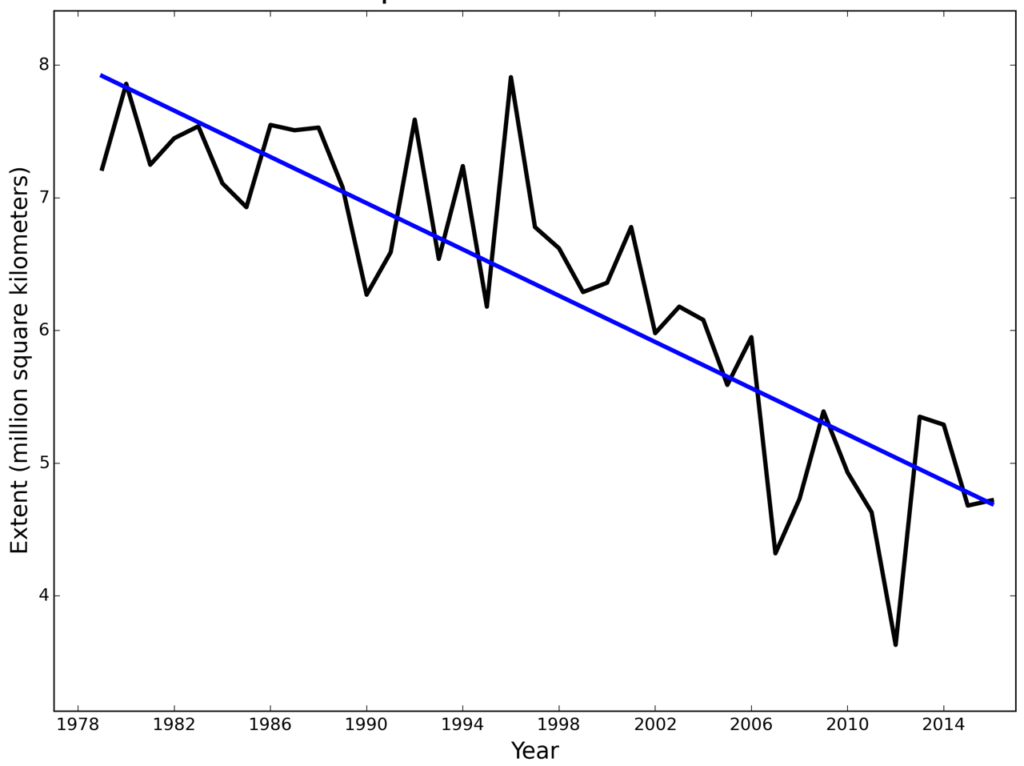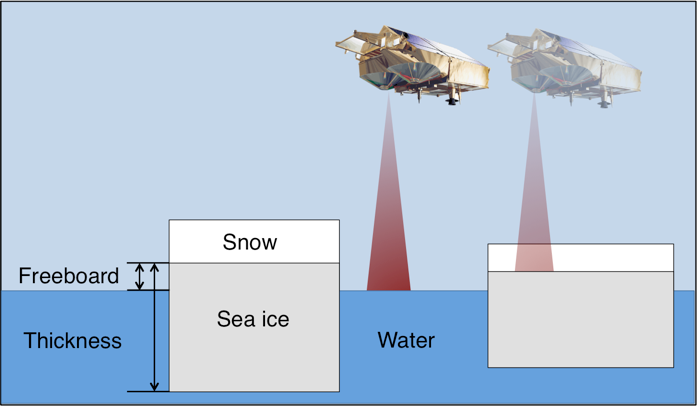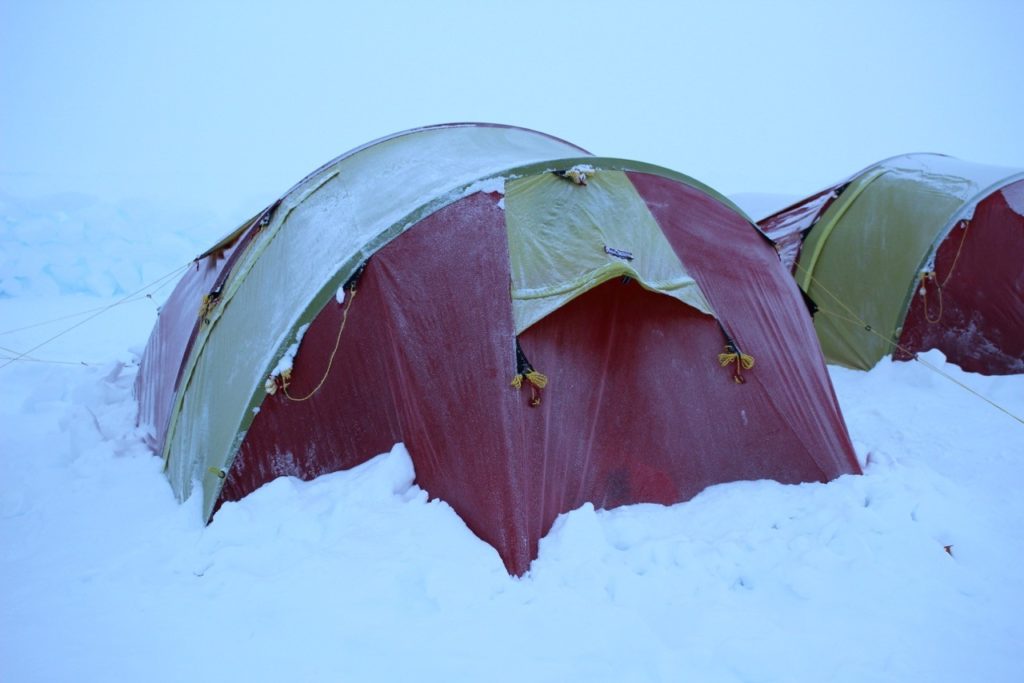By Rachel Tilling, CPOM Research Fellow, Leeds
“Has it all melted yet?” This is the most common question I get asked when I tell people about my research on Arctic sea ice, and how it’s responding to our changing climate. There’s a few others that always crop up too. So I’ve compiled them here to provide the ultimate FAQ on Arctic sea ice and what I do day-to-day. Trust me, no question is too simple… or too personal!
What IS sea ice?
Sea ice is simply frozen ocean water. The amount of sea ice in the Arctic and Antarctic varies throughout the year. For example, during winter the Arctic Ocean sea ice covers an area of around 14 million square kilometres – larger than that of Europe.
Why should we care?
The Earth’s sea ice cover is a major factor in our global climate system. Sea ice reflects a large fraction of the sun’s energy, prevents the ocean losing heat to the atmosphere, and regulates freshwater input into the ocean. All of these influence atmospheric and oceanic circulation in the Polar Regions and beyond, which in turn affect global weather and climate.
Has it all melted yet?
This is the million-dollar question. Short answer: no, but we’re getting there. Every September, when Arctic sea ice reaches its minimum extent of the year, a number of stories appear in the media. These range from alarmist, to fact-based and measured, to sheer denial. But all are prompted by one thing – the decline in Arctic sea ice extent that has been measured since satellite observation began in the late-1970s. The decline is coincident with abrupt global and Arctic warming over the last 30 years.
Exactly when the Arctic will become sea ice-free (defined as less than 1 million square kilometres of ice in summer) is a very active area of research. Some model studies suggest that it could be within the next decade, whilst others predict that there will still be summer sea ice cover in the Arctic well into the next century. To reduce the disagreement between model predictions it’s necessary to combine them with satellite measurements of the sea ice cover. Because sea ice is highly mobile and susceptible to deformation, we need to see under the surface to understand how it’s changing – we need to measure its thickness as well as its extent. This can be done using data from the European Space Agency’s (ESA) CryoSat-2 satellite, which was launched in 2010. The last six years of CryoSat-2 data have taught us a huge amount about the behaviour of Arctic sea ice, but continued and longer-term monitoring is crucial for our understanding.
What do you actually do?
Very fair question! You might conjure up a vision of a hardened researcher, freezing in the far North in the name of science… but I actually spend the majority of my time at my desk. I analyse satellite and weather data, to measure sea ice thickness and how it’s being affected by changes in our climate such as temperature, snow, and winds. I mainly use satellite data from CryoSat-2, which is a radar altimeter. This means it reflects from the sea ice surface and the ocean surface. By measuring the elevation of the sea ice above the waterline (the freeboard) we can estimate sea ice thickness using information on snow depth and the densities of the snow, ice and water.
Have you ever been to the Arctic?
I’ve been lucky enough to travel to the Arctic a couple of times. For me, the incredible fieldwork is the number one perk of the job.
The first time, I was part of a team based at a sea ice camp on the Lincoln Sea, north of Greenland. The camp was part of ESA’s 2014 CryoVEx campaign to validate sea ice thickness measurements from CryoSat-2. The toughest thing about the sea ice camp was the relentless cold (there aren’t any heaters at 84°N), but it was by far the best thing I’ve ever done. And we collected some great data! Sea ice camps are necessary when working on thick, old ice that isn’t easily accessible from land or by ship. We flew to the camp from Station Nord – a Danish military and scientific station in northeastern Greenland.
Turns out it’s really fun landing on metre-thick ice in a Twin Otter plane!
Credit: Tom Armitage
The second time was an altogether different, but equally awesome experience. We were part of a Finnish Meteorological Institute (FMI) campaign sampling thin, young ice in the Bay of Bothnia. We departed from Helsinki on-board the Research Vessel (RV) Aranda – an ice-reinforced vessel that is capable of breaking through thin sea ice. The thinnest ice we measured was just 15 cm thick, at our most southerly ice station. I wasn’t too happy to be standing on the ice at that point, but according to our Finnish colleagues “you could drive a truck on this!”
How cold was it?
Lincoln Sea air temperatures dropped to a minimum of -30°C when we were there. That’s cold enough to freeze your sweat, hair, underwear, food, toothpaste, and pretty much everything else.
What did you eat?
During the CryoVEx ice camp I learnt to love frozen chocolate and dehydrated food (boiling water provided by melting snow). Top tip: Always warm up your spoon before putting it in your mouth. It’s really no fun trying to tear it off your tongue before you can eat your lunch. I learnt that the hard way. On the RV Aranda, I ate better than I do at home. So. Much. Food. So much cake. An endless supply of coffee. And Finnish lunchtime is at 11am! Pirkko and Jukka, who cooked the delicious food, fast became my favourite people on-board.
How did you… go to the toilet?
When doing ship-based research, you’re never far from the luxury of a proper flushing toilet. Unfortunately the same isn’t true for sea ice camps. In this instance, I’ll let the picture speak for itself…





